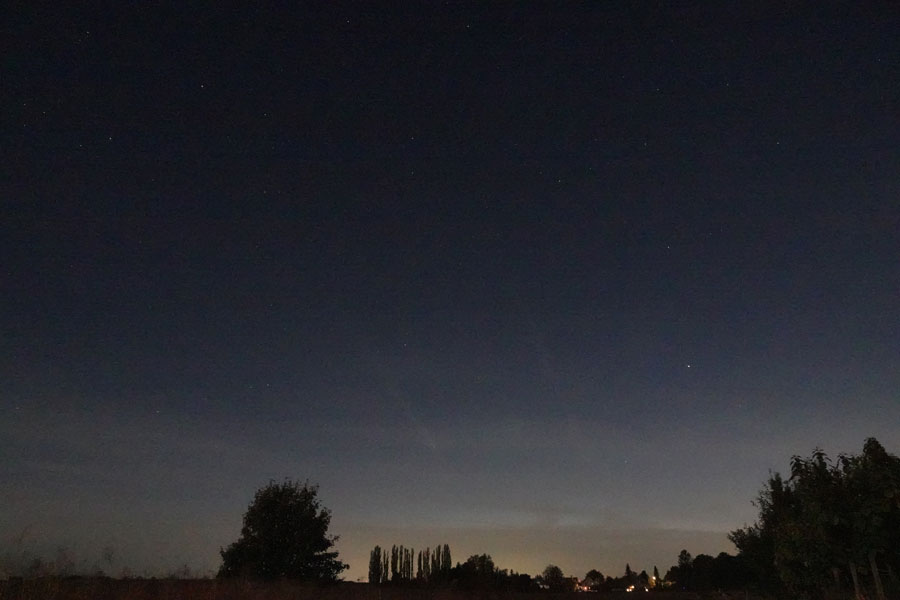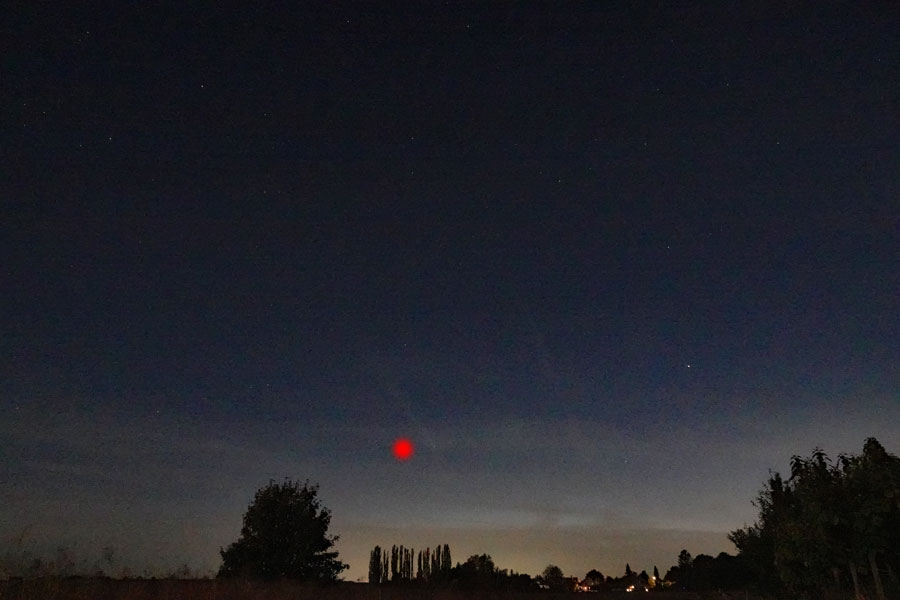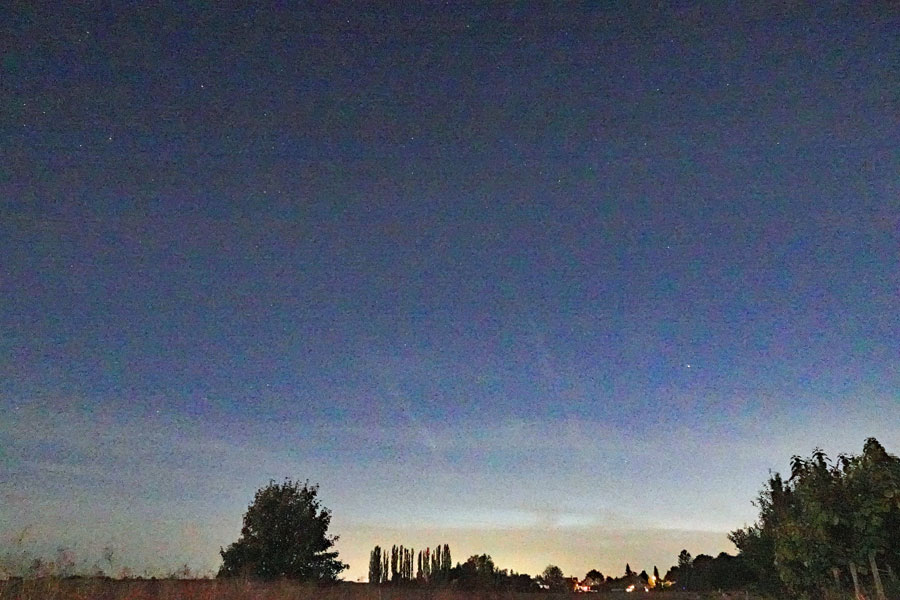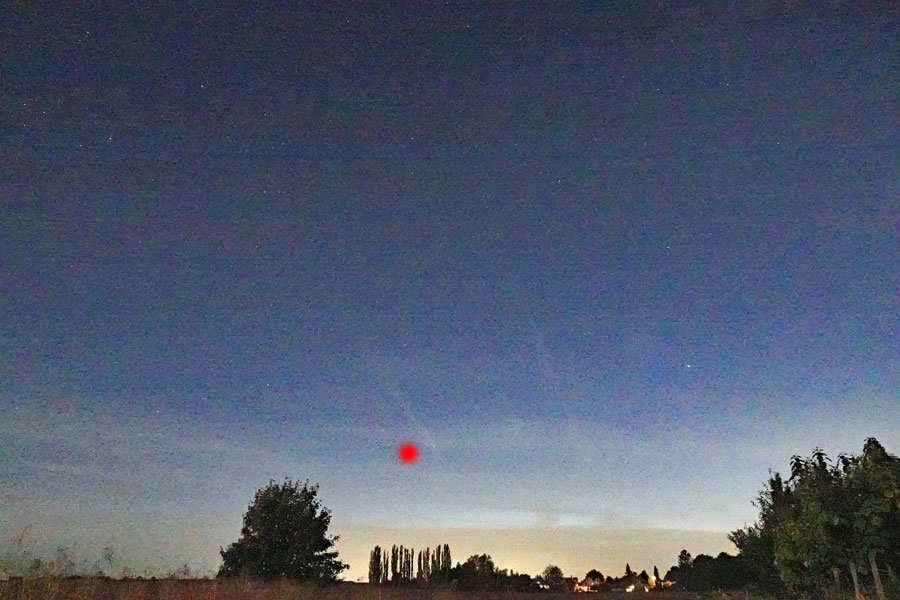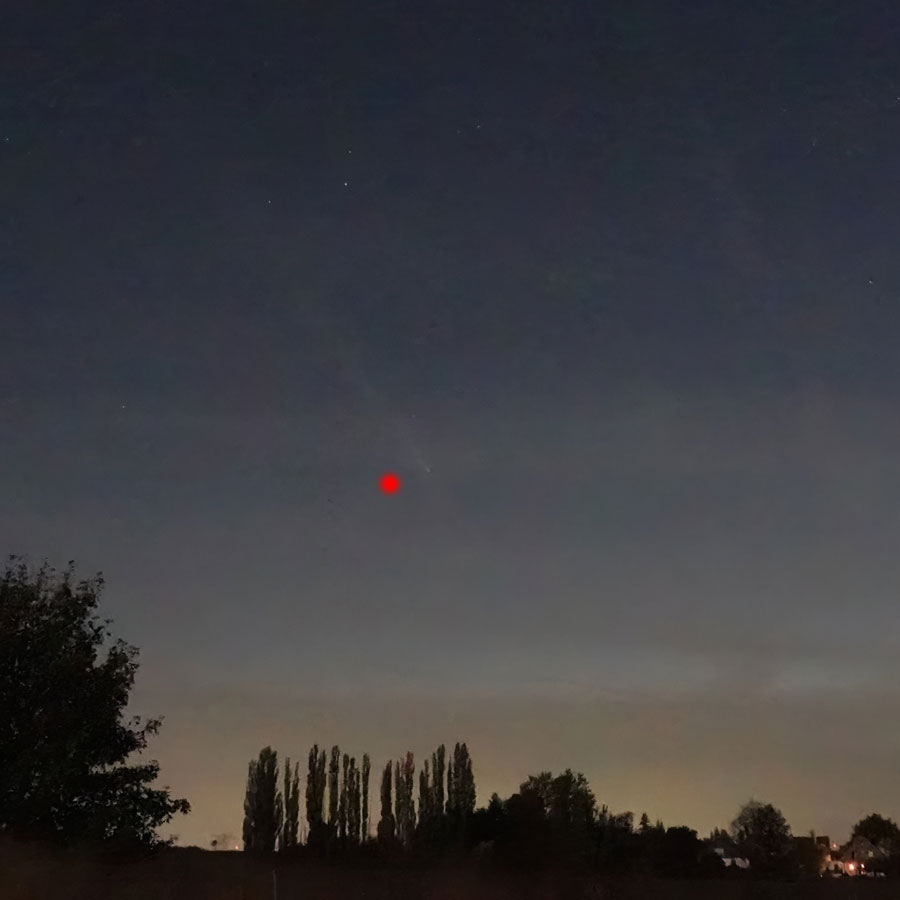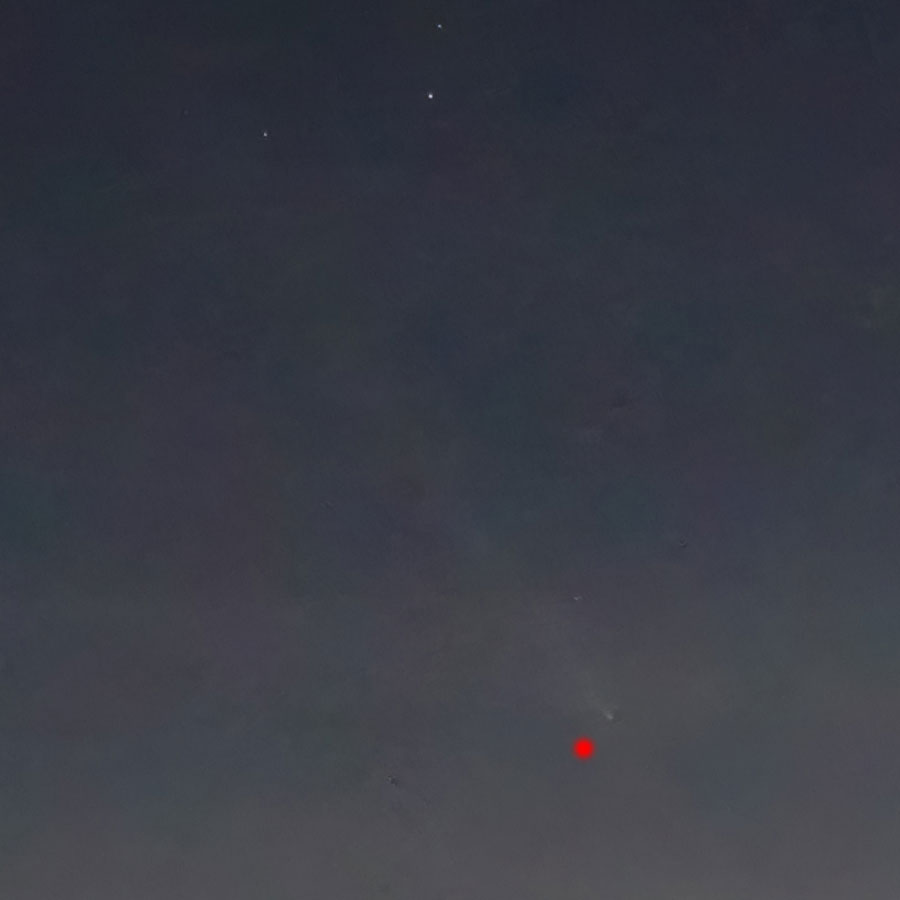Comets 2024
On this page, I present photos of the comet C/2023 A3 (Tsuchinshan-ATLAS) that I observed in the year 2024. During my first two attempts, I had very poor observation conditions so far, so these photos are disappointing and can only serve as “evidence”. The photos from my third attempt are a little bit better...
C/2023 A3 (Tsuchinshan-ATLAS)
The comet C/2023 A3 (Tsuchinshan–ATLAS) (or Comet Tsuchinshan–ATLAS or simply Comet A3) is a comet from the Oort cloud discovered by the Purple Mountain Observatory in China on 9 January 2023 and independently found by ATLAS South Africa on 22 February 2023. The comet passed perihelion at a distance of 0.39 AU (58 million km; 36 million mi) on 27 September 2024, when it became visible to the naked eye. Tsuchinshan-Atlas peaked its brightest magnitude shortly after passing the Sun at 9 October, with a magnitude of −4.9 per reported observations at the Comet Observation Database (COBS) (from Wikipedia.
Photos from October 15, 2024 (Erkerode)
I wanted to observe the comet Tsuchinshan-Atlas and also show it to our visitors. At first, however, it did not look like we would see the comet at all that day; there was simply nothing to see. But then I spotted it while "grazing" the target region (in the west, near the bright star Arcturus). And gradually the comet and its tail became a little more visible, at least in our binoculars. Some of us thought they could even see the comet with the naked eye, including me later (especially with indirect vision). Our landlord joined us just in time to see the comet, before it became fainter again. Clouds were probably already in the way...
Unfortunately, I only tried to take photos very late; only one of them came into focus (focusing was not easy...). This photo shows two foggy streaks; the one on the left above the poplars is the comet. At higher magnification you can also see a tiny bright nucleus.
Photos from October 16, 2024 (Erkerode)
The next day, I only managed to take two photos due to the clouds, which are also not quite sharp.
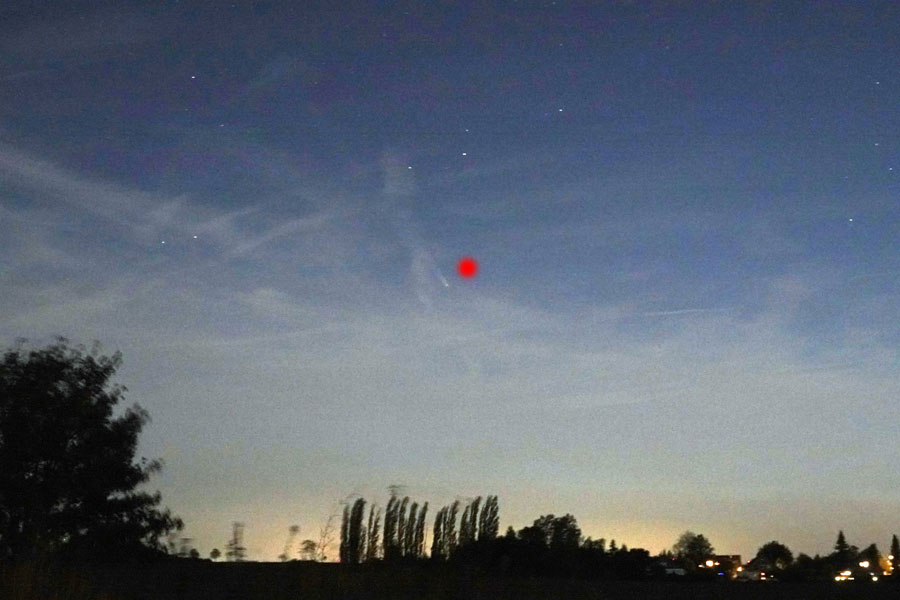 |
||
Oct 16, 2024 - Sky with comet, made brighter, comet marked |
Oct 16, 2024 - Sky with comet, made brighter, comet marked |
>> On October 17, 2024 I discovered the comet only briefly between clouds with binoculars, ditto on October 19, 2024 in Kellinghusen.
Photos from October 22, 2024 (Erkerode)
As it was quite clear in the west on October 22, I made another attempt to observe the comet in Erkerode. However, it took me ages to find it with the binoculars. It was now higher in the sky than Arcturus and also further south (in the constellation of the Serpent Bearer/Ophiuchus).
After I had looked for the comet with the binoculars from another location, namely where I had taken the previous photos, and found it, I got up and set up the tripod and camera again. Nothing of the comet was visible in the first photos. Only when I switched to 4 seconds exposure time (f/4, ISO 1600, manual focus) was it recognizable in the photos. I then zoomed in a little on the comet. This made it a little blurrier, but I did not need to mark it on the zoomed photos! Again, not great photos, of course, but at least these were my best to date!
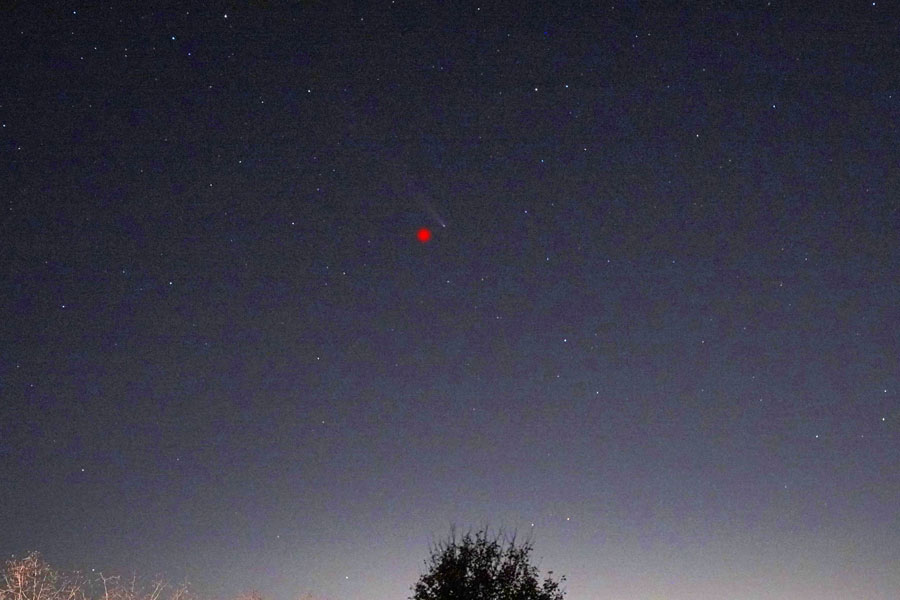 |
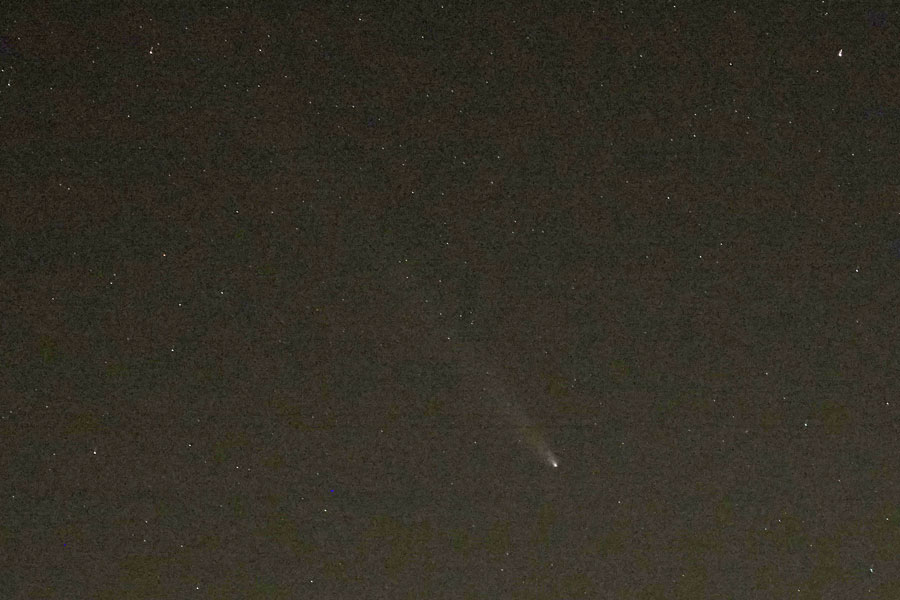 |
|
Oct 22, 2024 - Sky with comet, made brighter, comet marked |
Oct 22, 2024 - Comet, processed |
|
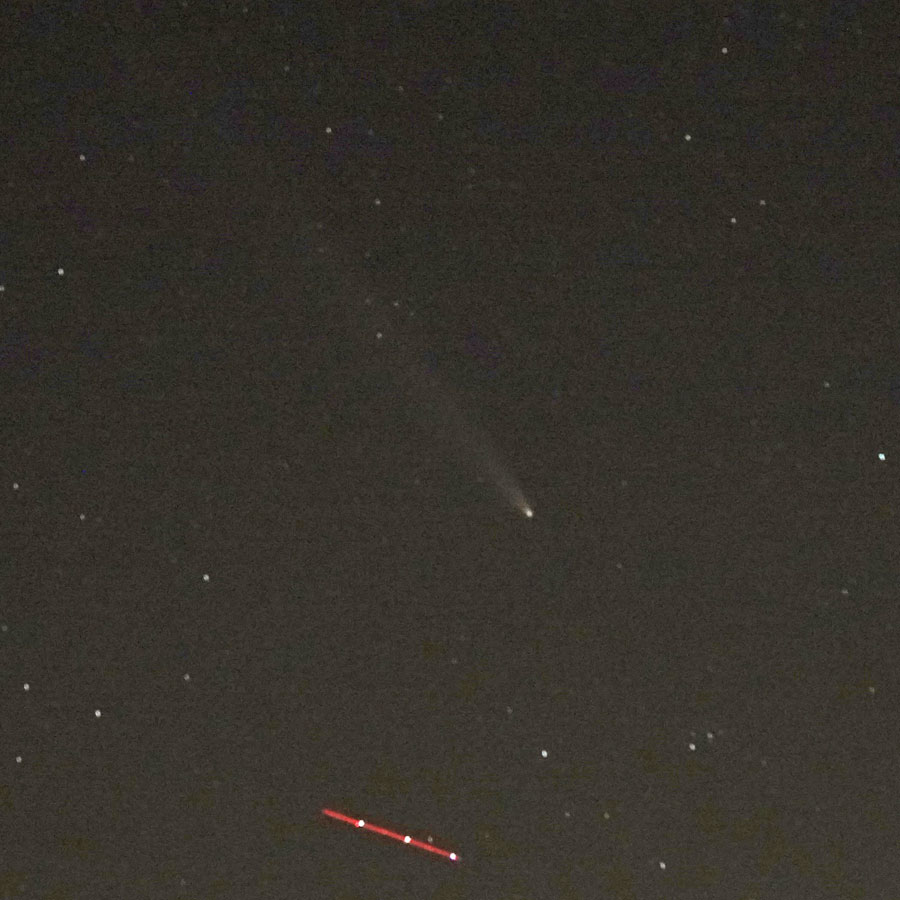 |
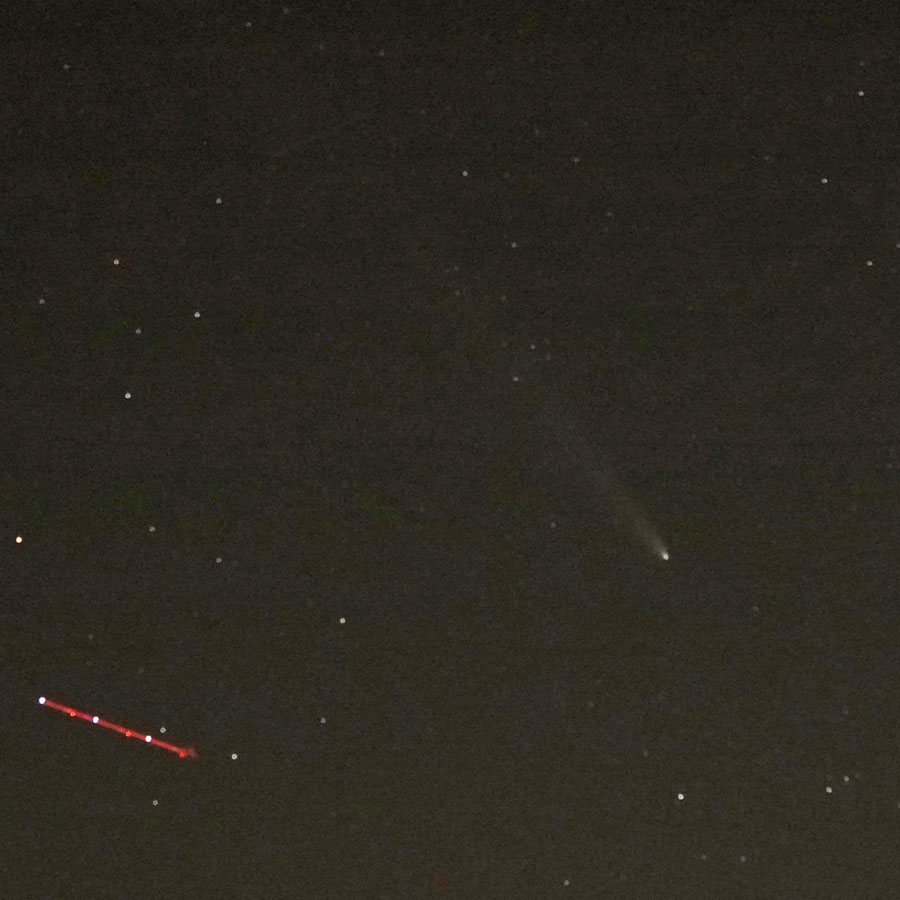 |
|
Oct 22, 2024 - Comet and airplane, processed |
Oct 22, 2024 - Comet and airplane, processed |
>> On October 23 and 25, 2024 I observed the comet with binoculars (similar as on October 22); the sky was clear.
Telescope and Binoculars on October 28, 2024
On October 28, 2024, I made my first attempt at the comet with a visual (and manual) telescope, using the Celestron C5 on the AZ Pronto mount. To be honest, I thought I would NEVER find the comet with the telescope. But the SkySafari application told me that the comet should be near the star Cebalrai in the constellation Ophiuchus. And I was able to find it (with difficulty...) in the red-dot finder. And because of the low magnification*, the comet was quickly found near this star!
*) 25 x (32 mm), 33 x (24 mm), 50 x (16 mm)
With binoculars, on the other hand, it was much more difficult to find the comet because it was very faint, but both my wife and I were able to see it with them.
References
- C/2023 A3 (Tsuchinshan–ATLAS) (Wikipedia): en.wikipedia.org/wiki/C/2023_A3_(Tsuchinshan–ATLAS)
| 28.10.2024 |
